 |
|
HOME
|
US Navy -
ships
|
US Navy - air
units
|
USMC - air
units
|
International
Navies
|
Weapon Systems
|
Special Reports |
|
United Kingdom - Royal Navy Albion class Landing Platform Dock |
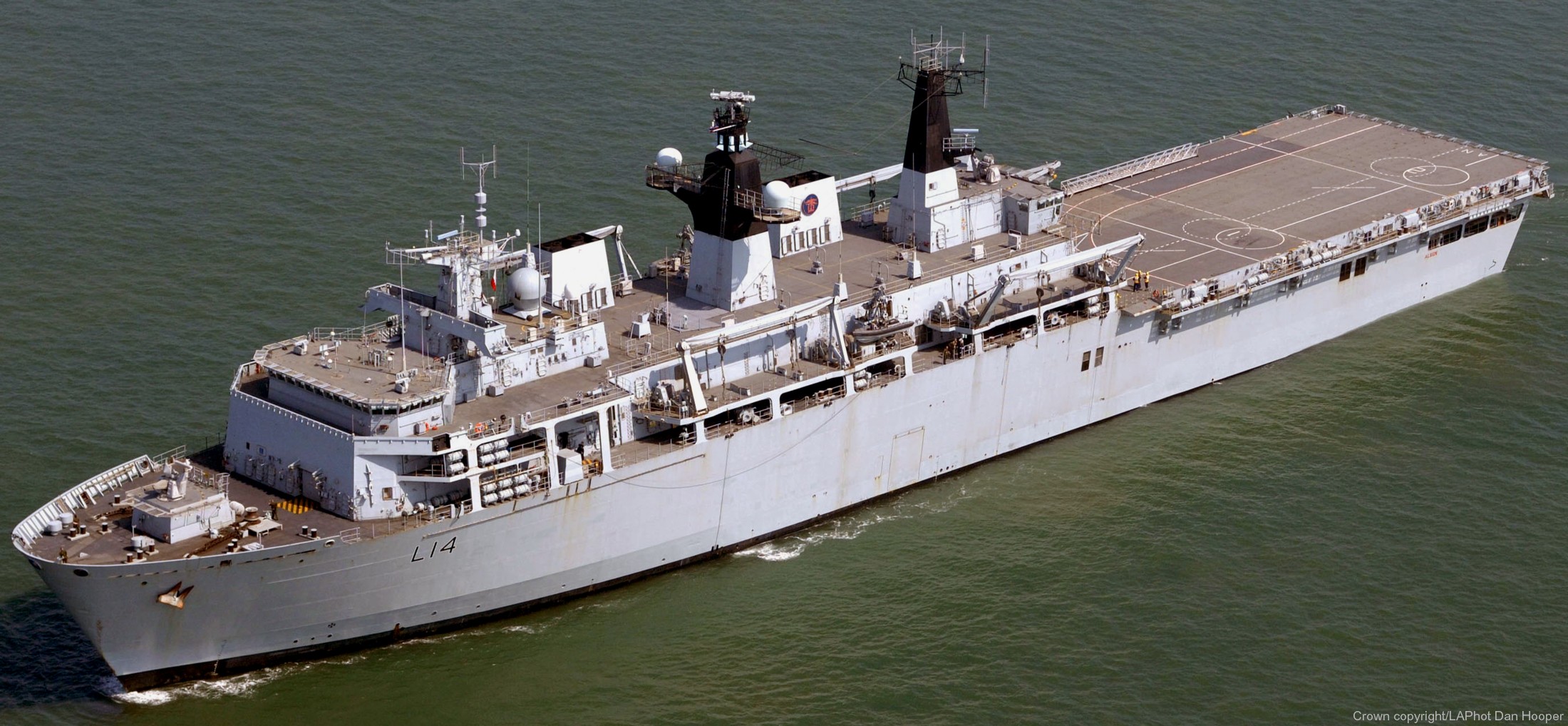 |
| 12/22 |
| Ships: |
|
L 14
HMS Albion
(2003) L 15 HMS Bulwark (2004) |
| Specifications: |
|
Length:
176 meters (577 ft)
Beam: 28.9 meters (95 ft) Draft: 7.1 meters (23 ft) Displacement: 19560 tons Speed: 18 knots (33 km/h) Range: 8000 NM (13000 km) Complement: 325 (ship) / 405 troops (normal) / up to 710 troops (overload) Propulsion: 2 x Wärtsilä Vasa 16V32E diesel generators 2 x Wärtsilä Vasa 4R32E diesel generators 2 x electric motors 2 shafts / 2 propellers / 1 bow thruster Armament: 2 x Goalkeeper CIWS (earlier) 2 x Mk.15 Phalanx CIWS (later) 2 x Oerlikon 20mm/85 GAM-BO1 guns Aviation: 2 landing spots for helicopter up to Chinook size / no hangar Landing Craft: 4 x LCU Mk.10 medium landing craft / 4 x LCVP Mk.5 light landing craft Systems: 2 x Kelvin Hughes Type 1007/8 navigation radars 1 x BAE Systems Type 996 surface/air search 3D radar (earlier) 1 x BAE Systems Type 997 Artisan 3D surface/air search radar (from 2011) |
|
|
|
The Albion-class landing platform dock (known also as an "amphibious
assault ship") is the newest type of amphibious warfare ship in
service with the Royal Navy. The class consists of two vessels,
HMS Albion and HMS Bulwark, ordered in 1996 to replace the ageing
Fearless class. Both ships were built by BAE Systems Marine at the
former Vickers Shipbuilding and Engineering yard in
Barrow-in-Furness. Albion was commissioned in 2003 and Bulwark in
2004. Each of the ships has a crew of 325 and can accommodate up to
405 troops. Thirty-one large trucks and thirty-six smaller vehicles
and main battle tanks can be carried inside the vehicle deck. To
disembark troops and vehicles, the vessels are equipped with eight
landing craft. Development: The value of the two Fearless class landing platform dock ships was highlighted during the Falklands War. Not only did the ships transport troops and vehicles to the South Atlantic, the commanders of the landing operations at San Carlos were aboard HMS Fearless, and once they arrived their flight decks were used to support airborne operations by helicopters and Sea Harrier jets. As these ships were built in the 1960s, on 18 July 1996 the British Ministry of Defence awarded a £450 million contract for their replacements to Vickers Shipbuilding and Engineering Ltd (VSEL) in Barrow-in-Furness. The ships' roles are "to act as the afloat command platform for the Royal Navy’s Amphibious Task Force and Landing Force Commanders when embarked" and "to embark, transport, deploy and recover troops with their equipment and vehicles which form part of an amphibious assault force". They are larger and more capable than the Fearless class, and formed part of a modernization programme of the British amphibious fleet, which includes the helicopter carrier HMS Ocean, the "Bay"-class landing ships of the Royal Fleet Auxiliary and the "Point"-class sealift ships. Extended readiness: To cut the running costs of the Royal Navy, the 2010 Strategic Defence and Security Review concluded that one of its two Albion class LPDs should be placed into extended readiness, or docked, while the other is held at high readiness for operations. The vessels will alternate between extended readiness and high readiness throughout their service lives. It was confirmed that Albion would be the first of the two vessels to be placed at extended readiness, for a cost of £2.5 million, as Bulwark had recently finished a major refit. Running costs while in extended readiness are estimated to be £300,000 per annum to keep the vessel available for reactivation at short notice. HMS Albion will re-enter high readiness when HMS Bulwark is put into extended readiness, expectedly around 2016. In 2014 Albion will enter a regeneration refit and will rejoin the active fleet in 2016. The running costs of one of the Albion class vessels at high readiness ranged from £17.7 million to £38.6 million per annum from 2007 to 2011. Characteristics: The Albion class LPDs have a length of 176 metres (577 ft), a breadth of 28.9 metres (95 ft), and a draught of 7.1 metres (23 ft). They have a normal displacement of 14,000 tonnes (14,000 long tons; 15,000 short tons), 19,560 tonnes (19,250 long tons; 21,560 short tons) at full load and 21,000 tonnes (21,000 long tons; 23,000 short tons) when the dock is flooded. The ships have a crew of 325 and can accommodate up to 405 troops, including their vehicles and combat supplies, in overload conditions. Propulsion is provided by two Wärtsilä Vasa 16V 32E diesel generators driving two electric motors, two shafts, and a bow thruster. This is the first diesel electric propulsion system to be used in a Royal Navy surface ship. It reduces the engine room crew by about 66 per cent compared with the preceding Fearless class of ships. The diesel electric system can propel the ships to a maximum speed of 18 knots and have a range of 8,000 miles (13,000 km). The aft flight deck has two landing spots for aircraft the size of a Chinook, although it has no hangar or aircraft storage facility. Below the flight deck is the dock and vehicle deck. The latter has the capacity to hold thirty-one large trucks and thirty-six smaller vehicles or six Challenger 2 tanks and thirty armoured personnel carriers. The dock can hold four Landing Craft Utility MK10, each large enough to carry vehicles up to main battle tank size, which are then launched by flooding of the dock area. Four smaller LCVP MK5 that can carry thirty-five men or two light trucks are carried on davits, two each side of the ship's superstructure. Each ship also carries a fifty-two ton tracked beach recovery vehicle for assisting with landing craft recovery, as well as two tractors: one that can lay a track-way across a landing beach, and the second fitted with an excavating bucket and forks. Weapons and sensors: For defence against missile attack, the Albion class LPDs have two 30 mm Goalkeeper CIWSs mounted fore and aft on the superstructure and two 20 mm guns. Defensive countermeasures include the Outfit DLJ decoys, eight Seagnat radar reflection / infra-red emitting decoy launchers and a BAE Systems DLH off-board decoy. When commissioned, the ships were fitted with two Kelvin Hughes Type 1007/8 I-band radars, for navigation and aircraft control. For air and surface search, a Selex Sensors and Airborne Systems Radar Type 996 E/F band radar was fitted. From 2013 on, RT996 will be gradually replaced by the BAE Systems Maritime Services Artisan 3D E/F-band (designated RT997). HMS Iron Duke will be the First of Class and RT997 will be fitted to Albion and Bulwark by 2015. There is also an ADAWS 2000 combat data system and a UAT/1-4 Electronic support measures (ESM) system. source: wikipedia |
|
images for more images go to the individual ship's page |
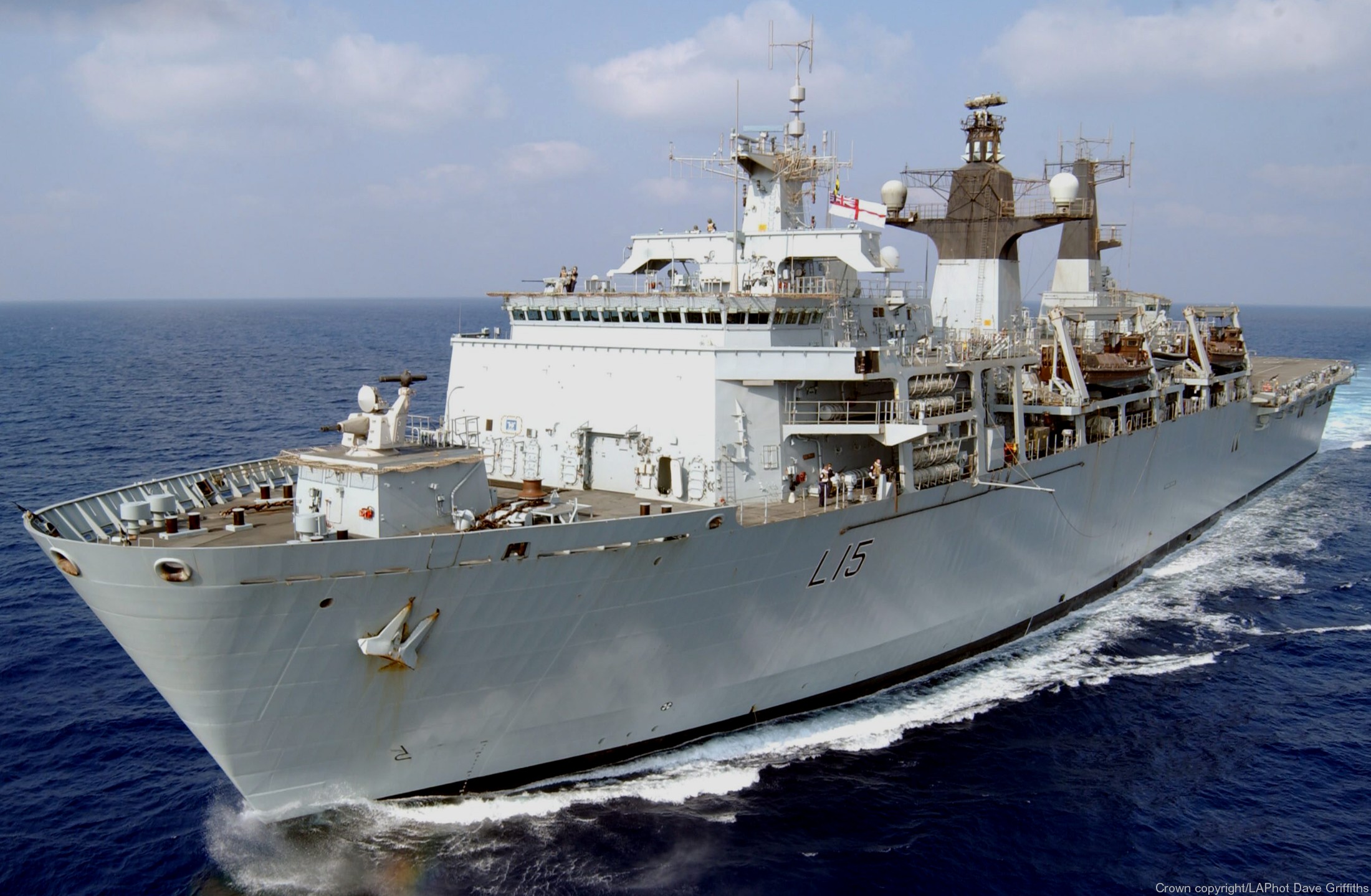 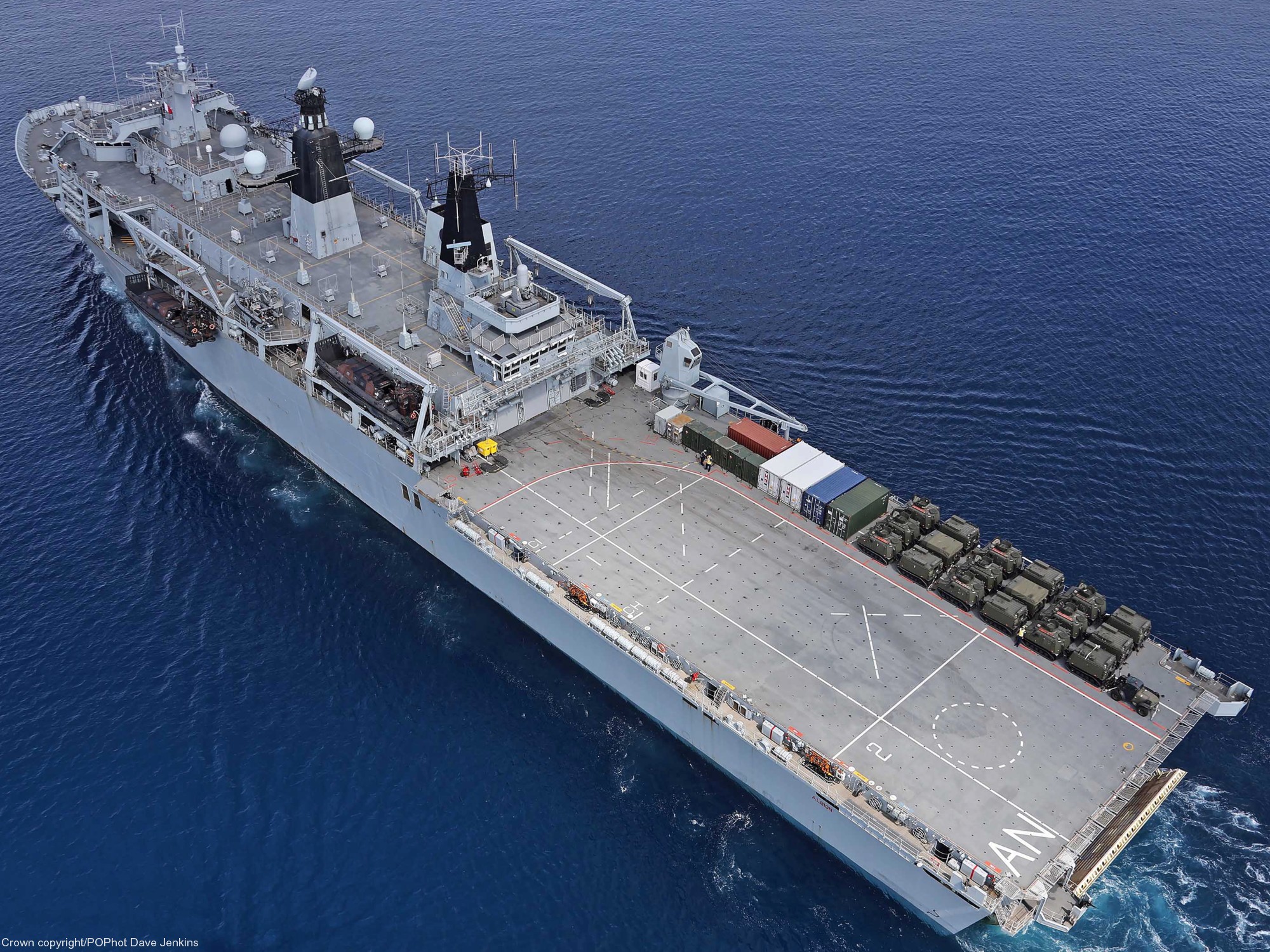 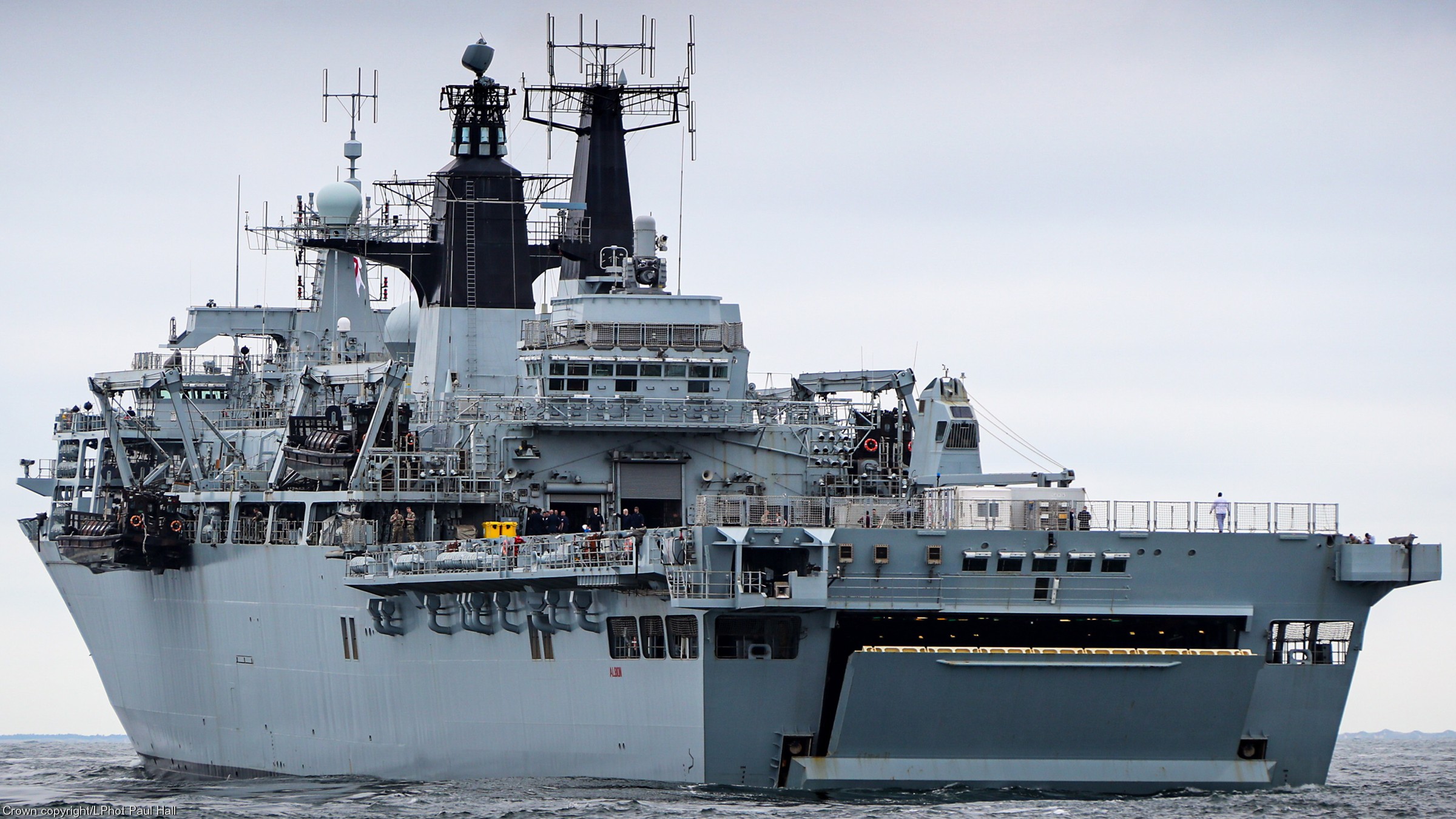 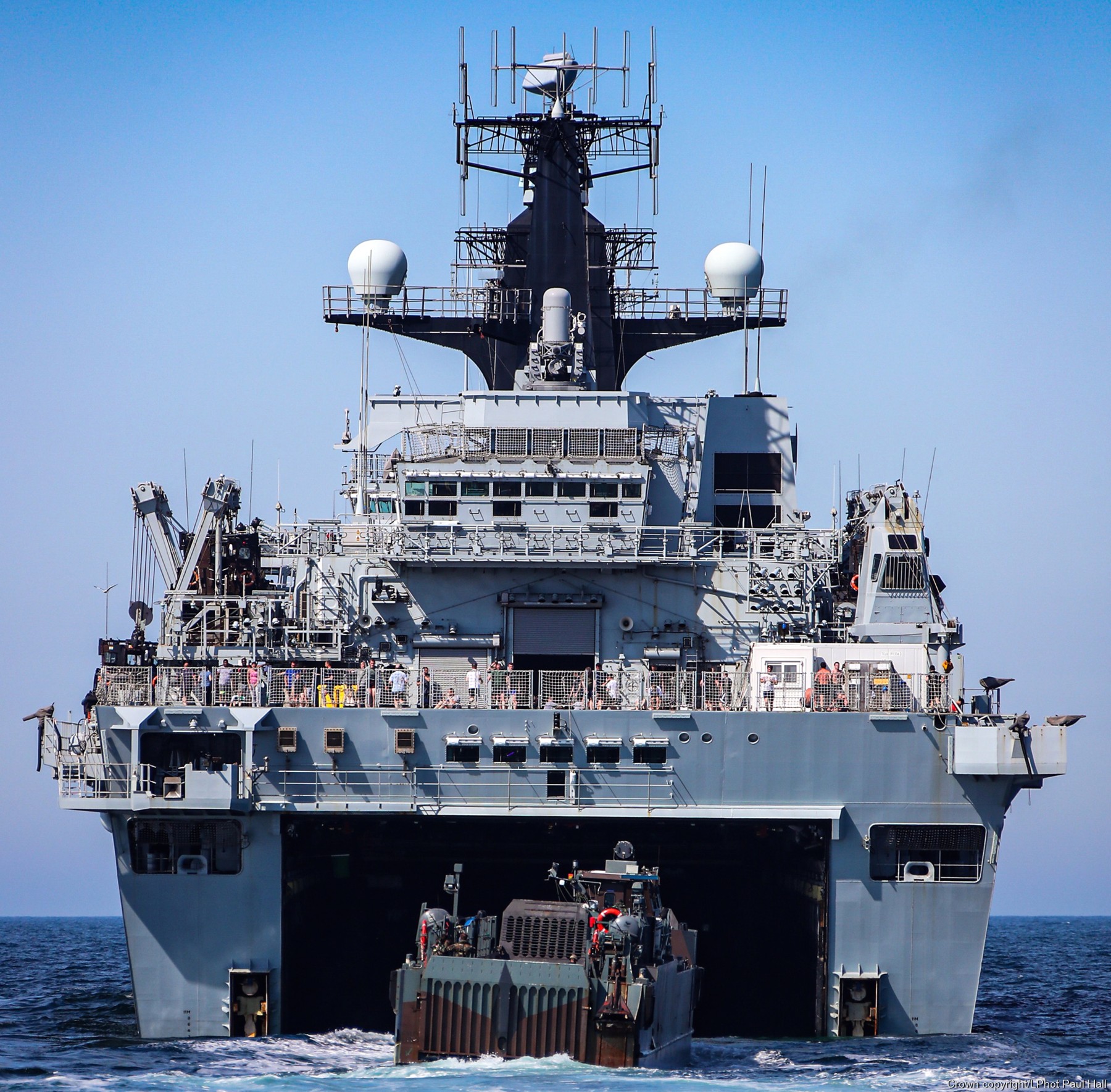 landing craft LCU Mk.10 - well deck operations 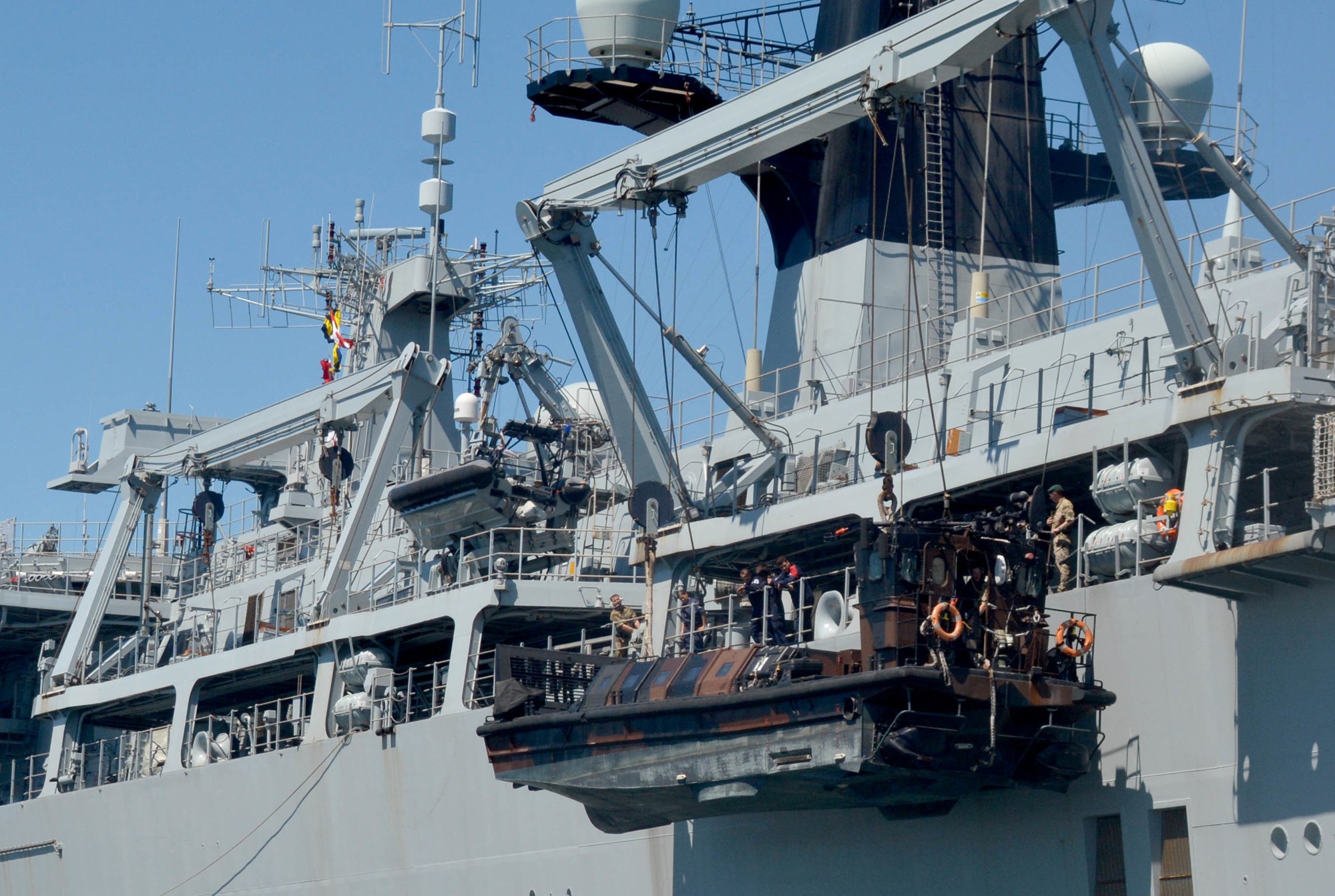 landing craft LCVP Mk.5 on davit 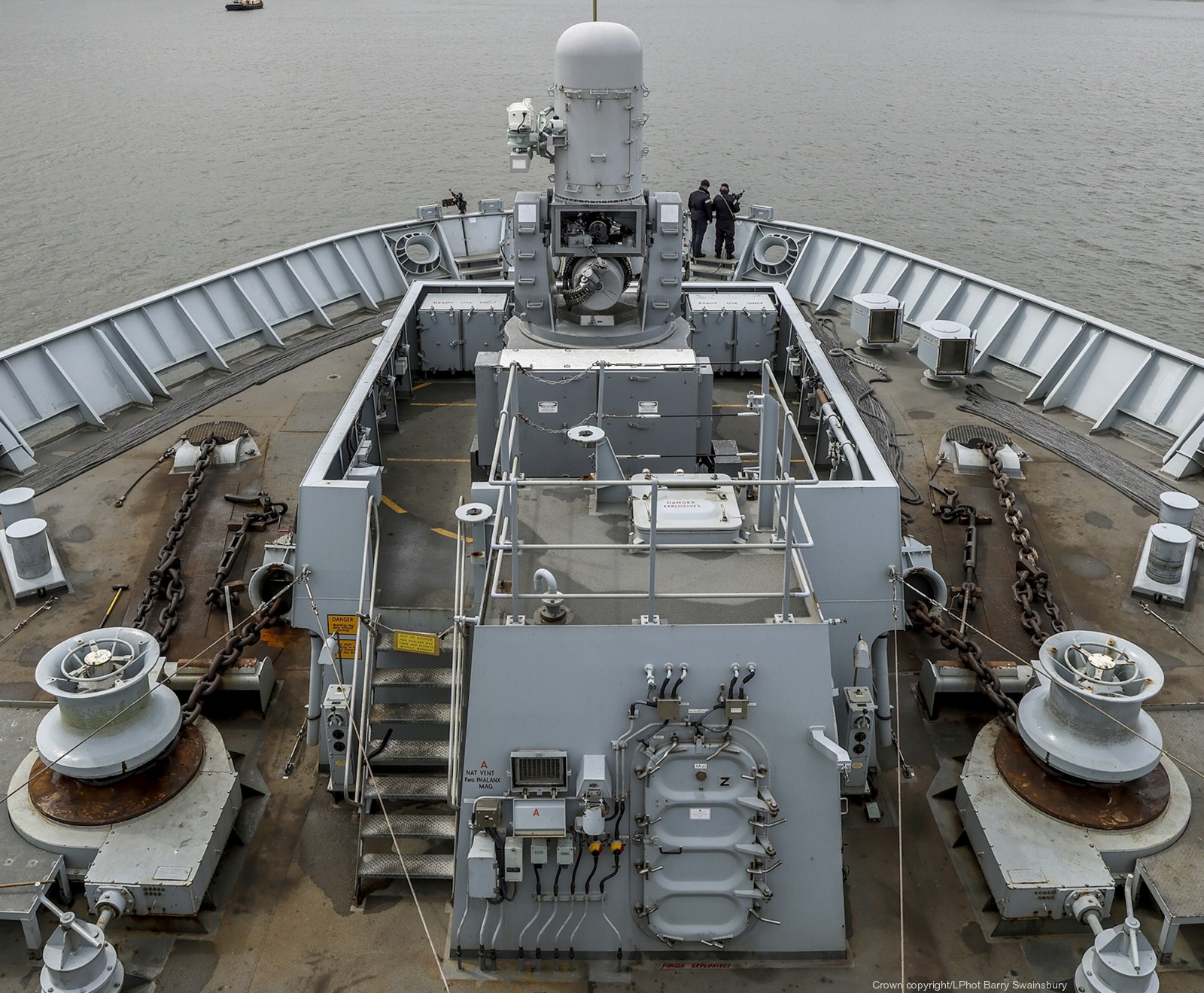 Mk.15 Phalanx CIWS (later) 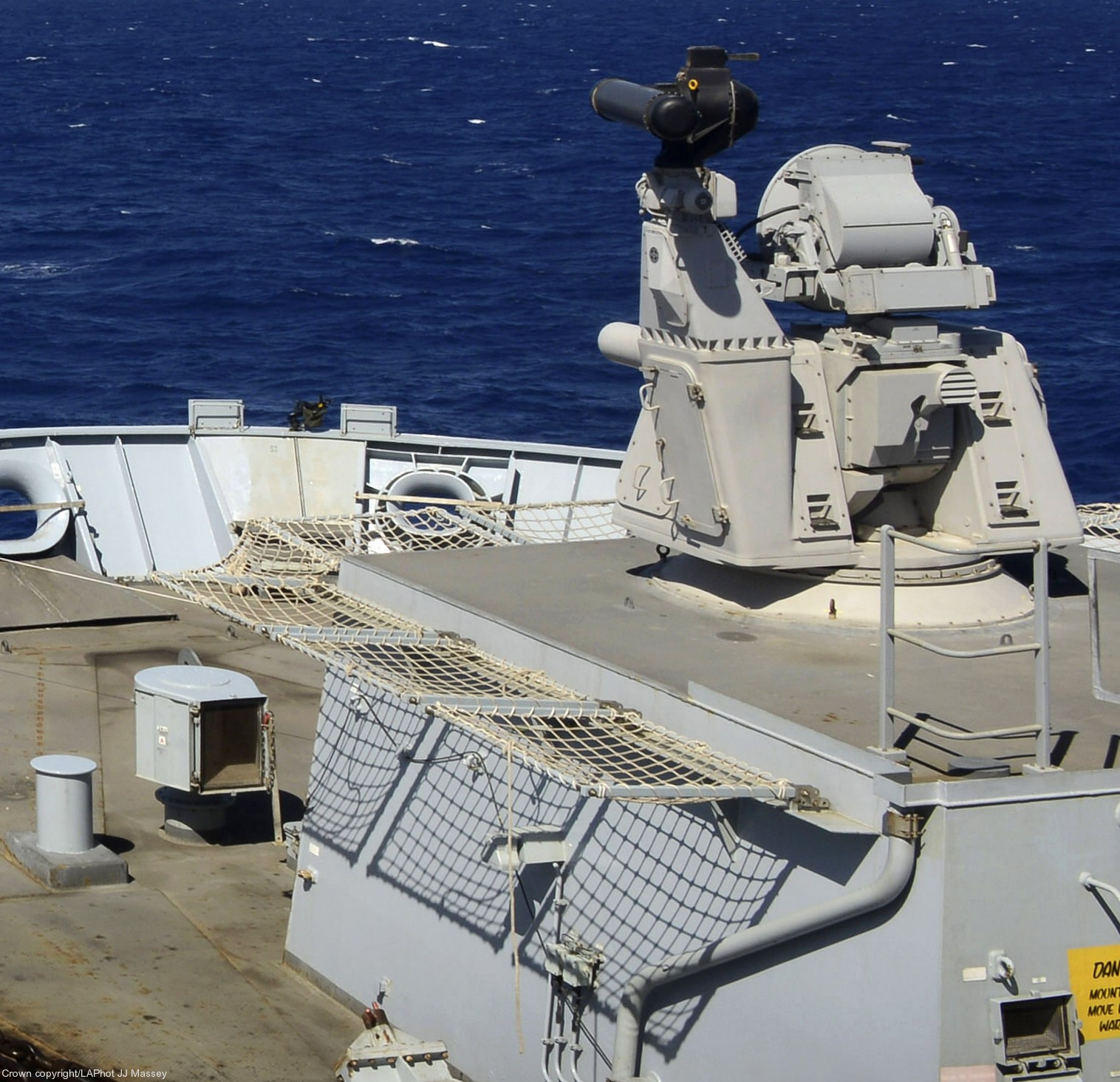 Goalkeeper CIWS (earlier - replaced by Mk.15) |
|
|
seaforces.org
|
Royal
Navy start page
| |